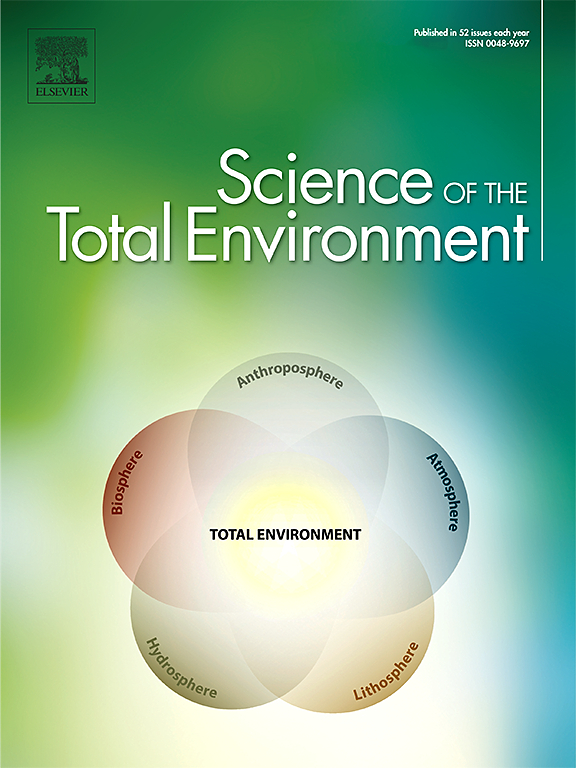Inactivating facultative pathogen bacteria and antibiotic resistance genes in wastewater using blue light irradiation combined with a photosensitizer and hydrogen peroxide
IF 8.2
1区 环境科学与生态学
Q1 ENVIRONMENTAL SCIENCES
引用次数: 0
Abstract
The effectiveness of antimicrobial blue light (aBL) irradiation in eliminating ten clinically significant antibiotic resistance genes (ARGs) and four taxonomic marker genes of the WHO-priority ESKAPE bacteria group from wastewater treatment plant (WWTP) effluent was examined. Experiments were conducted using an LED-driven continuous-flow photoreactor operating at wavelengths of 405 nm, 420 nm, and 460 nm. Irradiation with aBL alone was insufficient for effectively inactivating or eliminating ESKAPE bacteria and clinically relevant ARGs. The addition of the porphyrin-based photosensitizer TMPyP (10−6 M) or the oxidative agent H₂O₂ (1 mM) resulted in several log10 unit reductions of facultative pathogenic bacteria (FPB), their taxonomic gene markers, and target ARGs. However, the additional effects of TMPyP and H2O2 were only noticeable in conjunction with aBL irradiation, as they were ineffective without it.
The reduction of the different FPB and ARGs in WWTP effluents was analyzed using culturing and qPCR together with living/dead discrimination. Different FPB and ARGs showed varying susceptibility to aBL-mediated irradiation. Among the FPB, enterococci were the most sensitive, while among the ARGs bacteria carrying ermB, tetM, sul1, and blaVIM genes exhibited the strongest removal. This sensitivity may be due to the gene-carrying microorganism's response to aBL irradiation combined with TMPyP or H2O2. Additionally, molecular biology results revealed that aBL irradiation induced up to 13 lesions per 10 kb DNA, which is hypothesized to contribute to the acute inactivation effect and prevent regrowth by inhibiting DNA repair activities.

求助全文
约1分钟内获得全文
求助全文
来源期刊

Science of the Total Environment
环境科学-环境科学
CiteScore
17.60
自引率
10.20%
发文量
8726
审稿时长
2.4 months
期刊介绍:
The Science of the Total Environment is an international journal dedicated to scientific research on the environment and its interaction with humanity. It covers a wide range of disciplines and seeks to publish innovative, hypothesis-driven, and impactful research that explores the entire environment, including the atmosphere, lithosphere, hydrosphere, biosphere, and anthroposphere.
The journal's updated Aims & Scope emphasizes the importance of interdisciplinary environmental research with broad impact. Priority is given to studies that advance fundamental understanding and explore the interconnectedness of multiple environmental spheres. Field studies are preferred, while laboratory experiments must demonstrate significant methodological advancements or mechanistic insights with direct relevance to the environment.
 求助内容:
求助内容: 应助结果提醒方式:
应助结果提醒方式:


